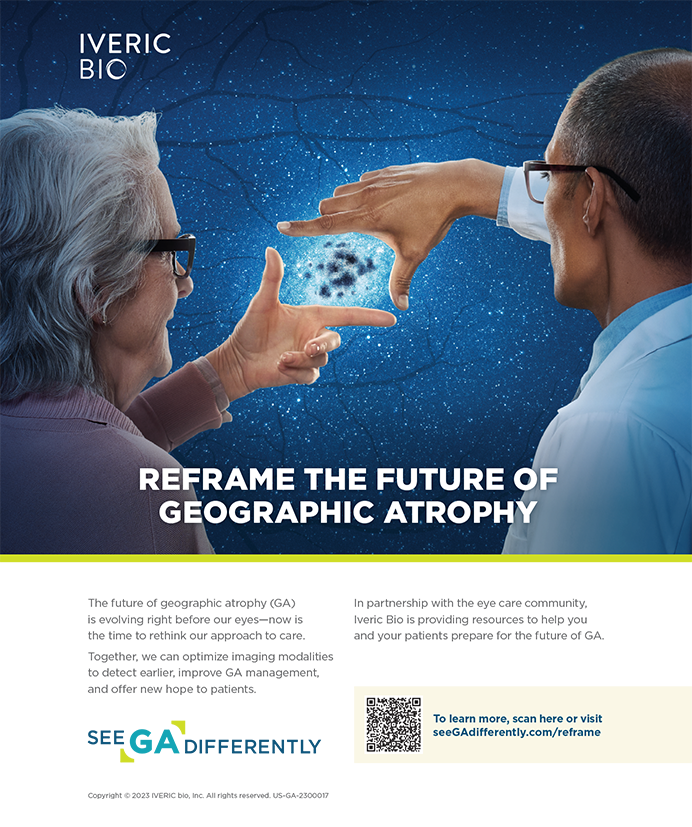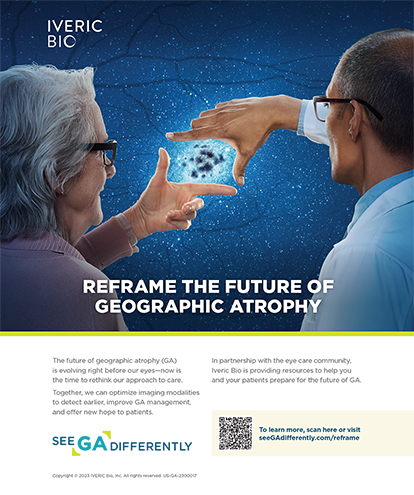Standard LASEK offers numerous advantages over LASIK. Performing LASEK, which requires no corneal stromal flap, eliminates issues related to ectasia, interface impurities, irregularity, or epithelialization, as well as flap striae, folds, and interlamellar keratitis.1-4 In addition, LASIK requires 410 µm of corneal thickness that must be preserved (160 µm of the flap plus 250 µm of the stromal bed). In most cases, this limitation does not allow surgeons to create optical zones wide enough to accommodate patients' pupil diameters. For this reason, undercorrection must be planned in all cases of highly myopic patients. In addition, limited corneal thickness frequently does not permit LASIK retreatments. LASEK, on the other hand, allows for ablation up to 200 µm, as there is no flap, and thus more corneal thickness is available for treatment.
FACILITATING RAPID RECOVERY
Diluted alcohol application in LASEK, performed over a diameter of 9.5 mm, leaves approximately 67% of viable cells in the epithelial flap, which usually allows rapid healing. A postoperative complication of standard LASEK is low epithelial viability, which may hinder rapid recovery. The corneal flap appears gray in color and shows reduced transparency. Epithelial cell adhesion to the corneal stroma is diminished, and the surgeon can observe corneal debris under the bandage contact lens during the immediate postoperative period. Reduced epithelial adhesion lessens stromal protection with consequent ocular discomfort. Visual acuity is reduced by flap opacity and irregular epithelial cell disposition. This situation rapidly improves when the epithelial flap reattaches to the limbus. To solve this dilemma, I have developed a variation of the LASEK technique that preserves the connection between the corneal flap and the limbus. This connection is essential for re-establishing corneal epithelial adhesion and stratification.
SURGICAL TECHNIQUE
Before the procedure, which I have named butterfly LASEK, I administer two applications of oxybuprocaine chlorhydrate eye drops. Next, I prepare and drape the patient, apply a lid speculum, and administer lidocaine 4% eye drops. I use a spatula that I have specifically designed for this technique (the Vinciguerra Spatula; ASICO, Westmont, IL), and I impart a thin, 0.75-mm abrasion to the paracentral corneal epithelium, from 8 to 11 o'clock, in order to spare the optical zone (Figure 1). After positioning the LASEK fluid-holding ring, I apply a 20% solution of alcohol and BSS (Alcon Laboratories, Fort Worth, TX) to the cornea for approximately 5 to 20 seconds. The length of time depends on the firmness of the epithelial adhesion noted during the initial abrasion, with a firmer adhesion requiring a slightly longer time.
GENTLY DISSECT AND ABLATE
With the Vinciguerra Spatula, I then cautiously dissect the epithelium, with its basal membrane, from Bowman's membrane up to the limbus. Remember that after applying the alcohol solution it is mandatory to keep the cornea well hydrated in order to preserve the obtained loosening effect. If this hydration is not properly maintained after the time necessary for dissection of the first flap, the second flap will be dehydrated, thus hampering what should be an easy dissection. Take special care when creating these flaps in order to avoid accidental perforation. I named this technique the “Butterfly technique,” as the two symmetric epithelial flaps resemble the wings of a butterfly.
Before ablating, I make sure to dry the surface carefully. In order to keep the flap folded peripherally and prevent its ablation, I position a specially designed retractor/protector (Vinciguerra Retractor FCPS, ASICO), until I complete the excimer ablation (Figure 2). After the refractive laser ablation, I perform a smoothing procedure in order to achieve a regular stromal bed, similar to the physiological Bowman's membrane as much as possible. In the smoothing process, I apply a hyaluronic acid masking fluid (Laservis; Chemedica, Munchen, Germany), and continually distribute it on the surface with the Buratto Spatula (ASICO). The smoothing diameter is at least 9.5 mm, involving the entire corneal surface and thus preventing a hyperopic shift.
AVOIDING DRYNESS
During the procedure, the surgeon must continuously add and evenly distribute the masking fluid to avoid the formation of dry areas. To prevent the tissue from overheating, the ablation is set at 30 µm, at 10 Hz. Because of the masking fluid, the real ablation imparted is 8 µm. Once the smoothing phase is completed, I remove the retractor/protector, and carefully reposition the epithelial flaps over Bowman's layer with the Vinciguerra-Carones Spatula (ASICO), overlapping their margins. Finally, I place a bandage contact lens at the completion of the procedure.
CONCLUSION
The Butterfly LASEK technique provides improved flap viability, greater patient comfort, and faster visual recovery than the conventional LASEK method. In the future, customized ablation will require focal ablations limited in microns in order to eliminate optical aberrations. The effect of these customized, focal ablations can be reduced by the following: biomechanical effects induced by LASIK, flap creation, problems related to flap irregularity, effects due to flap adaptation to the stromal bed, and limits in ablation depth. LASEK, with less biomechanical effect and the flap masking effect on the imparted ablation, appears to be more appropriate for upcoming custom ablations.
Fabrizio I. Camesasca, MD, is Vice-Chairman of the Department of Ophthalmology at the Istituto Clinico Humanitas, Rozzano, Milano, Italy. He does not hold a financial interest in any of the products mentioned herein. Dr. Camesasca may be reached at + 39 02 8224 2311; fabrizio.camesasca@humanitas.it
1. Azar DT, Ang RT, Lee JB, et al: Laser subepithelial keratomileusis: Electron microscopy and visual outcomes of flap photorefractive keratectomy. Curr Opin Ophthalmol 12:323-328, 2001
2. Kornilovsky IM: Clinical results after subepithelial photorefractive keratectomy (LASEK) J Refract Surg 17:S222-223, 2001 (2 suppl)
3. Scerrati E: Laser in situ keratomileusis vs. laser epithelial keratomileusis (LASIK vs. LASEK) J Refract Surg 17:219-221, 2001 (2 suppl)
4. Lee JB, Seong GJ, Lee JH, et al: Comparison of laser epithelial keratomileusis and photorefractive keratectomy for low to moderate myopia. J Cataract Refract Surg 27:565-570, 2001


